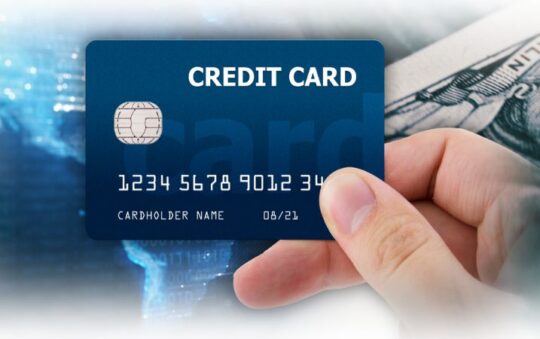Individual Retirement Accounts, or IRAs, are tax-favored savings and investment accounts designed to help individuals save for retirement. Their primary advantage lies in receiving tax breaks that allow your money to grow faster than it would in a regular taxable account.
Your options for opening an IRA include opening it with a bank, brokerage firm, or financial advisor; they will help you with selecting investments such as stocks, mutual funds, and exchange-traded funds (ETFs).
If you are one of the 67 percent of Americans without access to an employer-based retirement plan or are reaching your maximum contributions at work and seeking another solution, an IRA might be right for you. You can click here to learn more about this statistic.
There are several types of IRAs from traditional to Roth, each offering specific rules and benefits; generally, if funds are withdrawn prior to age 59 1/2 there may be a 10% early withdrawal penalty applied on top of any taxes you owe.
An Individual Retirement Account, or IRA, can provide an easy starting point for building wealth for retirement.
What Is a Precious Metals IRA?
A precious metals IRA is an Individual Retirement Account (IRA) that invests in physical gold, silver, platinum, and palladium instead of traditional paper assets like stocks and bonds. Such accounts allow investors to diversify their holdings as they provide protection from inflation, currency deflation, and political uncertainty.
Most precious metal IRAs consist of coins and bars meeting specific purity requirements, with gold being the most frequently invested in.
Gold has long been seen as both a store of value and a form of currency; additionally, it may act as an effective hedge against economic instability or inflation by rising when equity markets decline. You can click the link to find out who the best gold IRA companies are to start your research. It is important to read independent reviews before selecting an investment partner.
When selecting a precious metals IRA provider, be sure to select a company with an excellent track record for excellence and accreditation, competitive fees, and storage options, as well as one that works with a custodian who specializes in precious metals IRAs and understands all applicable rules and regulations pertaining to such investments.
When withdrawing metals from an IRA, follow standard withdrawal rules to avoid incurring penalties of 10% before age 59 1/2. It is wise to consult a financial professional who can create comprehensive plans for all your retirement investments (including precious metals IRAs) that align with both your goals and risk tolerances to help ensure no costly errors are made when withdrawing them.

Opening an Account
An Individual Retirement Account, or IRA, is a tax-advantaged investment account designed to help save for retirement. You can open one with most financial institutions – banks, brokerage firms, and robo-advisors alike.
When selecting an IRA provider, pay attention to account opening fees, management fees as well as investment minimums, and trading commissions; additionally, if investing in multiple stocks, mutual funds, and ETFs seek out lower-cost options.
Although investing in individual stocks may be tempting, a more prudent and secure strategy would likely be to utilize mutual funds or ETFs with diversification to limit risk and ensure your portfolio reaches its growthpotential. Working with an investment advisor to tailor a portfolio that suits your goals would also be highly advantageous.
As soon as you open an IRA, one of the key aspects to remember is making consistent monthly contributions – either via payroll deductions, automatic bank transfers, or direct deposits into your new IRA. Successful investors make it a habit of funding their accounts no matter what market fluctuations.
No matter which IRA type you select, income taxes will not become an issue until it comes time to withdraw the money in retirement. Therefore, it is wise to plan ahead for this eventuality by projecting your future tax rate. If distributions will not start until age 59 1/2 or later, consider switching over to a Roth IRA which has no minimum withdrawals at that age point.
Also read: 4 Advantages of Alternative Investment Platforms
Rollovers
Direct rollover is the quickest and simplest way to transfer funds between retirement accounts, with your plan administrator sending the money directly to your new IRA custodian, who then invests or cashes a check with your money in their hands.
An indirect rollover occurs when you receive a distribution from your employer’s retirement account and then transfer it back into an equivalent account type (such as another 401(k), IRA, or new employer plan) within 60 days to avoid taxes and penalties.
You must replace any amounts withheld by the IRS as part of an indirect rollover while following certain other rules to maintain its tax advantages. You can click the link: https://www.nerdwallet.com/article/investing/how-to-rollover-401k-roth-traditional-ira for more information.
To perform an indirect rollover, contact your previous employer’s retirement plan administrator and indicate your intent to roll your distribution over into an IRA or qualified account.
Next, provide the name and contact info for either custodians or new employer plans; after which, your former plan administrator will send a check made payable directly to them with instructions to deposit it into your IRA or qualified account.
To complete an indirect rollover successfully, a few additional steps must be taken to make sure it is tax-free. Primarily, ensure you have enough funds in your IRA or qualified account in case the IRS withholds anything; also file Form 5329 Indirect Rollovers with them so they know about the transaction.
A direct rollover differs from a transfer in that its new account must also be an IRA while both accounts should contain retirement savings plans such as 401(k).

Conversely, when conducting a direct rollover, the receiving firm will issue IRS Form 1099-R and send the Form 5498 as proof that a contribution from an IRA or qualified account has been received – this allows the IRS to recognize your transaction and assess any applicable penalties. Failure to follow either process properly could incur serious hefty fines; this is why it is recommended that you work with a financial professional to ensure the rollover is done properly.





